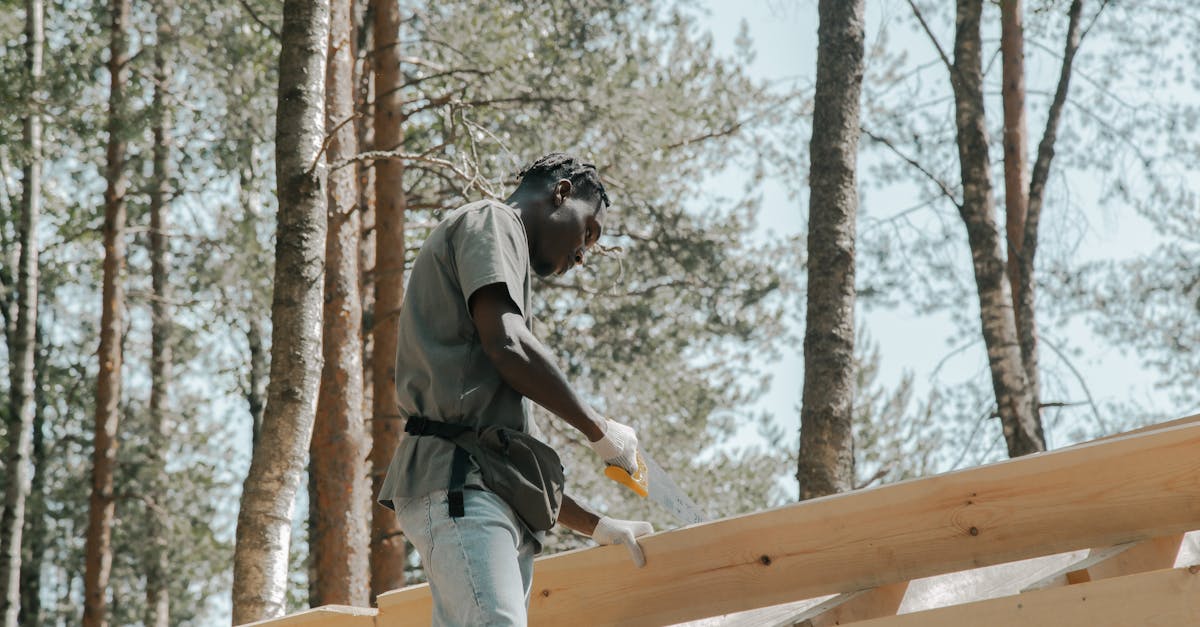Innovations in Polycarbonate Roofing for Residential Use

Table Of Contents
Sustainability in Manufacturing
The manufacturing process of polycarbonate roofing has seen significant advancements aimed at minimising environmental impact. Many companies have adopted energy-efficient technologies during production. This shift not only reduces greenhouse gas emissions but also decreases overall energy consumption. Furthermore, the sourcing of raw materials has become more responsible, with an emphasis on utilising recycled content whenever possible.
Innovations in the production techniques of polycarbonate panels promote durability and longevity. High-quality materials reduce the frequency of replacement, which lessens waste and conserves resources over time. Certification programs for sustainability in manufacturing are increasingly prevalent, guiding consumers towards environmentally friendly options. This commitment to sustainable practices sets a positive precedent within the industry, encouraging further development of green technologies.
Eco-Friendly Aspects of Polycarbonate Roofing
Polycarbonate roofing offers significant eco-friendly advantages that make it an appealing choice for environmentally conscious homeowners. The production of polycarbonate materials often involves less energy consumption compared to traditional roofing options. Additionally, these roofs are highly durable, which translates to a longer lifespan and reduced need for replacement. This longevity decreases waste in landfills by minimising the frequency of roofing renovations.
Another notable aspect is the material's recyclability. When polycarbonate roofs reach the end of their functional life, they can be recycled into new products, contributing to a circular economy. This contrasts with many materials that might end up as waste. Moreover, polycarbonate's ability to insulate creates energy efficiency in homes, reducing reliance on heating and cooling systems. This not only leads to lower energy bills but also lessens the overall environmental impact associated with energy consumption.
Rainwater Harvesting Compatibility
The design of polycarbonate roofing allows for seamless integration with rainwater harvesting systems. With its lightweight profile and strong structural integrity, polycarbonate panels can support the necessary fittings for gutters and downpipes. This compatibility enables effective collection and storage of rainwater, contributing to a sustainable water management solution for households.
Moreover, polycarbonate's resistance to corrosion suggests longevity in outdoor applications. This durability ensures that the roofing system remains functional over time, providing continued support for rainwater harvesting initiatives. Homeowners can maximise their water conservation efforts while enjoying the aesthetic and practical benefits of polycarbonate roofing.
Integrating Systems for Water Collection
The integration of rainwater harvesting systems with polycarbonate roofing presents a formidable solution for sustainable living. These roofs are designed with the necessary slopes and features to facilitate efficient water drainage, directing rainwater into collection systems. When installed correctly, the guttering and downpipes align seamlessly with the roof's architecture, ensuring optimal capture of rainwater while maintaining aesthetic appeal.
Moreover, polycarbonate’s lightweight nature simplifies the installation of water collection systems. Homeowners can easily incorporate tanks or other storage solutions without overwhelming structural requirements. This ease of integration encourages more households to adopt rainwater harvesting practices, contributing to water conservation efforts in residential areas. The compatibility of these systems with polycarbonate roofing not only enhances functionality but also promotes sustainability within the community.
Easy Installation Techniques
The installation of polycarbonate roofing has been designed to streamline the process for homeowners and contractors alike. Pre-cut panels reduce the need for extensive modifications on-site. Lightweight materials make handling more straightforward, allowing for quicker setup and reduced labour costs. This ease of installation encourages more DIY enthusiasts to consider polycarbonate options for their projects, further expanding its appeal in the residential market.
Utilising innovative fastening systems and accessories, the process becomes even more efficient. Clips and brackets specifically designed for polycarbonate roofing help secure panels effectively while allowing for thermal expansion. This adaptability ensures that the roofing holds its integrity under varying weather conditions. Furthermore, clearer installation guides and video tutorials are readily available, making the transition to this modern roofing solution seamless for many.
Simplifying the Roofing Process
The installation of polycarbonate roofing has seen significant advancements, making it more accessible for both DIY enthusiasts and professional contractors. Lightweight materials reduce structural strain, enabling simpler handling during installation. This also leads to shorter installation times, as fewer tools and less complex techniques are required. The materials can often be cut easily using standard tools, allowing for quick adjustments on-site.
Pre-designed panels facilitate a more streamlined approach, leading to precise fitting and minimal waste. Many manufacturers provide clear instructions and online tutorials, helping homeowners feel confident in their ability to complete the job. With less need for skilled labour, the entire process becomes not only faster but also more cost-effective, appealing to a broader audience interested in home improvement projects.
FAQS
What are the key eco-friendly aspects of polycarbonate roofing?
Polycarbonate roofing is highly durable and recyclable, reducing waste in landfills. Additionally, its energy-efficient properties can help minimise heating and cooling costs, contributing to a smaller carbon footprint.
How can polycarbonate roofing support rainwater harvesting systems?
Polycarbonate roofing can be easily integrated with rainwater collection systems, allowing homeowners to collect and utilise rainwater for irrigation or other non-potable uses, promoting water conservation.
What are the benefits of using polycarbonate roofing for residential applications?
Polycarbonate roofing is lightweight, impact-resistant, and provides excellent thermal insulation. It also allows natural light to filter through while blocking harmful UV rays, making it a practical choice for residential spaces.
Are there any specific installation techniques recommended for polycarbonate roofing?
Yes, using pre-cut panels, ensuring proper sealing and ventilation, and employing the correct fasteners are crucial for simplifying the installation process and ensuring the longevity of the roofing.
How does polycarbonate roofing contribute to sustainable building practices?
By utilising recyclable materials, offering energy efficiency, and enhancing water management systems, polycarbonate roofing aligns well with sustainable building practices, making it a responsible choice for modern constructions.
Related Links
Exploring the Use of Concrete Roof Tiles in Adelaide HomesAdvantages of Using Timber Shingles for Residential Roofing
Eco-Friendly Roofing Materials for Sustainable Housing in Adelaide
Understanding the Benefits of Slate Roofing in Residential Projects
The Role of Thatch Roofing in Traditional Australian Architecture
Asphalt Shingles: An Affordable Residential Roofing Option in Adelaide